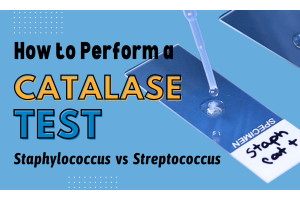INULIN - Do the many benefits outweigh the discomfort?
Do food labels tell the full story of what consumers are eating? In the U.S., many citizens may be unaware of how much inulin they may be consuming on a daily basis.
As a result, individuals who consume inulin may suffer from digestive discomfort without knowing the true cause.(1) On many food labels, there is helpful and descriptive information that allows the consumer to be aware of what they are going to eat. However, one piece of information may be missing: how much inulin is in the product.
Inulin is a starchy, soluble fiber found in approximately 36,000 species of plants with the highest content from chicory root and Jerusalem artichoke. Inulin is also fructan. Like other fructans, it is a prebiotic, meaning that it feeds the good bacteria in the gut. Fructans are chains of fructose molecules. The molecules link together in a way that the small intestine cannot break down. Instead, they travel to the lower gut, where they feed beneficial gut bacteria. The gut bacteria convert inulin and other prebiotics into short-chain fatty acids, which nourish colon cells and provide various other health benefits.
Inulin tends to be added to many types of foods, including protein bars, dairy, baked goods, and certain drinks.(9) Moreover, inulin can alter the texture of foods and may make certain foods healthier to consume.(2) Consequently, by adding inulin (usually from chicory root as pictured above), the prebiotic content of foods can be boosted and may replace less healthy ingredients like fats or sugars.

As a whole, inulin has several major health benefits, but there are also a few negative outcomes that may occur. Among the known positive side effects are improved digestive health, constipation relief, weight loss promotion, promotion of mineral absorption, and diabetes prevention. Other possible, but less documented benefits are the prevention of colon cancer, heart disease, and irritable bowel disease (IBD) (2,3,8) Additionally, inulin has been found to stimulate beneficial digestive bacteria and help support a balanced gut microbiota.(1) As a result, consuming inulin is expected to boost the overall health of an individual. After inulin supplementation in humans, the most consistent change was an increase in Bifidobacterium. Other results included an increase in relative abundance of Anaerostipes, Faecalibacterium, and Lactobacillus, and a decrease in the relative abundance of Bacteroides.(7)
Because of its high fiber content, which cannot be digested by stomach acid or pancreatic enzymes, one of the negative aspects of consuming inulin is that individuals who consume inulin may experience bloating, gas, diarrhea, and digestive discomfort. Doctors suggest gradually increasing the amount of inulin consumed over a long period of time to reduce these negative symptoms.(1,8)
Throughout the world, inulin is slowly being accepted as a beneficial dietary fiber. Some countries have included the substance on food labels, while others are slow to do the same.(4) If inulin is not labeled in the dietary fiber section of foods, it may be listed in the ingredients as chicory root or extract.
As inulin is slowly added to nutrition labels, more consumers may be able to correlate increased consumption with gastrointestinal discomfort and adjust their intake accordingly. Being armed with this information will allow consumers to better control any negative experiences and reap the potential health benefits of choosing a diet higher in inulin.
References: 1, 2, 3, 4, 5, 6, 7, 8, 9
By Anna Klavins and Emily Edds
R&D Microbiologists, Hardy Diagnostics







